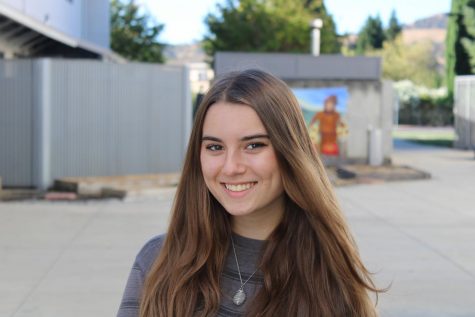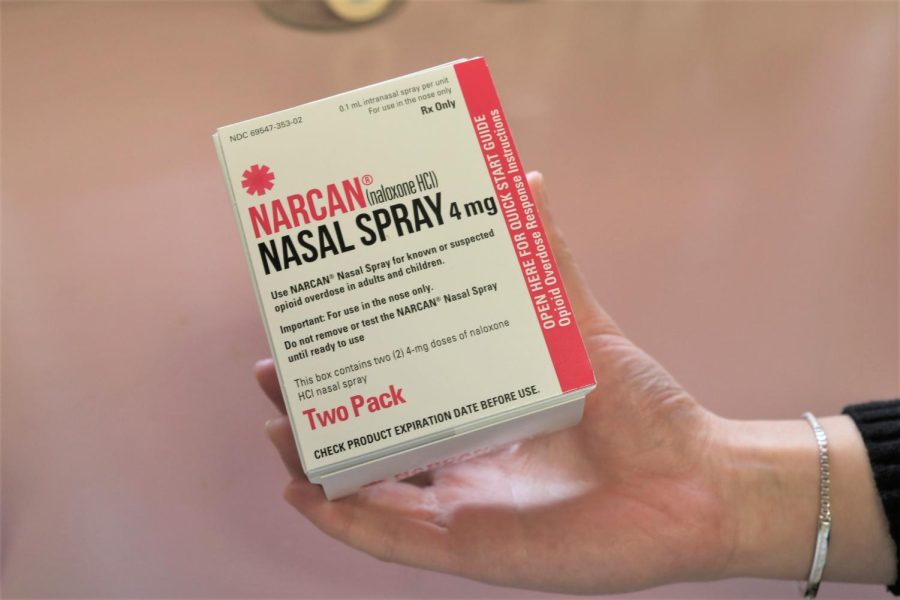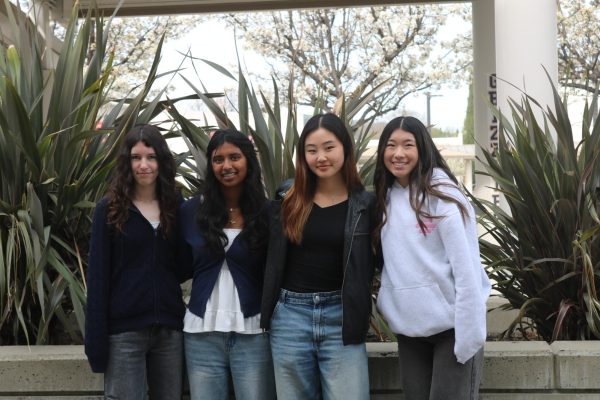Cal prepares for drug overdoses with Narcan spray
Naloxone can reverse opioid overdoses
Narcan nasal spray has been on campus since December.
A medication called naloxone was made available on campus in December as a way for Cal High to better prepare for possible drug overdoses.
Naloxone is a synthetic drug that can be used to reverse an opioid overdose if administered in time. It’s commonly found as a nasal spray which can quickly and easily be administered to temporarily save someone who has overdosed on opioids until paramedics can arrive.
Opioids are a class of drugs which include heroin, fentanyl, as well as many prescription pain relievers. Deaths caused by opioid overdose have been increasing consistently since 1990, according to the National Institute on Drug Abuse. In 2021, more than 80,000 opioid-related deaths were recorded.
Having naloxone on campus means administrators are prepared to respond to an overdose if one were to occur. Narcan brand naloxone spray is currently located in the administration and nurse’s offices. Principal Demetrius Ball, biomedical science teacher Joanna Condon, and counselor Rebecca Bellini are the only staff trained to administer naloxone.
Condon described the training as consisting of two parts: an online slide deck to learn about naloxone and its usage, and a practical training with nurse Niko Holmes, who demonstrated how to actually administer the Narcan spray.
“A lot of our science teachers are CPR certified,” Condon said. “I actually personally think all teachers should be trained [on naloxone administration].”
The introduction of naloxone on campus is primarily a proactive measure. Ball said opioid abuse has not been a significant problem at Cal.
“Vaping is definitely a problem,” Ball said. “But I don’t know of any [prescription drug] incidents in the past. There hasn’t been anything brought to admin’s attention this year.”
Naloxone spray has been introduced on multiple school campuses throughout the state and may become a requirement.
California Assembly Bill 19 introduced in December would require all state public schools to maintain at least two doses of naloxone hydrochloride or another opioid antagonist on their campuses. The bill is still a proposal and has not yet been voted into law, but it has bipartisan support from legislators.
Cal received the naloxone by enrolling in the Naloxone Distribution Project (NDP), a government program that provides free naloxone to schools, community organizations and other public facilities.
By doing so, the San Ramon Valley Unified School District hopes to bring awareness to the issue of prescription drug abuse in young adults and make naloxone available to anyone who may need it. But in order to make this a reality, the school needs volunteers such as Condon and Bellini willing to be trained to administer naloxone.
“The Narcan knocks the opioids off our receptors and our goal is to bring back that reflex to breathe,” district nurse Kathy Roony said. “Each of these [naloxone] kits has a box of Narcan, three of these one- time face shields [and two sets of gloves].”
The NDP is run by California’s Department of Health Care Services. It has been working with an organization called the National Coalition Against Prescription Drug Abuse (NCAPDA) to provide naloxone to high schools all around the country.
April Rovero founded the NCAPDA as a way to raise awareness about the dangers of prescription drug abuse after the tragic loss of her son, Joseph Rovero, a Cal graduate who died from a lethal combination of prescription drugs and alcohol on Dec. 18, 2009, in Tempe, Ariz. He was 21.
For the last four years, Rovero has been reaching out to district board members to share her knowledge about the rise in prescription drug overdoses in adolescents, as well as pushing for naloxone in high schools.
“The average parent or student isn’t aware [of opioid overdoses]. The education isn’t there,” Rovero said. “If there hasn’t been a horrible incident on their campus, it’s easy to just push it aside and assume it isn’t going to happen to them.”
Through presentations and reaching out to Cal staff about naloxone training certification, the naloxone kits were finally introduced on campus in December, according to Roony.
“I think what kind of pushed [the addition of naloxone] to the forefront was around October with the big scare of the rainbow fentanyl around Halloween,” Roony said. “[Narcan] took a while to get because of the rainbow fentanyl. It brought the problem up in many communities across the state because there was a big demand.”
Cal’s NCAPDA representative, freshman Shreya Sharma, helped Rovero move these additions along as quickly as possible by bringing attention to the rise in overdose cases through presentations to Cal staff. In mid December, the two presented to the district board.
“In the presentation [Rovero] was basically talking about bringing awareness to the topic because that’s the single best way to combat it,” Sharma said.
SRVUSD was not the first in the state to suggest having naloxone available in schools. Many other high schools already had the synthetic drug on campus for emergencies.
A student from Acalanes High School in nearby Lafayette was rushed to the hospital around 10 a.m. on Jan. 13 after a suspected opioid overdose, according to KTVU news. While still on campus, the student was administered Narcan and was safely rushed to the hospital.
Unfortunately, because of the quick response time required for opioid incidents, having naloxone on campus will only be able to help if an overdose were to occur on campus. Anything that happens at home will not benefit from this development.
As numbers of fatalities from opioid overdoses rise, Cal and the district are doing all they can to avoid contributing more lives to those statistics.
“What I would want parents to know is that any parents should have Narcan on hand just in case,” Rovero said. “As long as we will be able to continue to give out Narcan [parents and students] can contact the NCAPDA at ncapda.org to get the training they need and to get free Narcan rescue kits.”

Junior Alexia Broughton is a reporter at Cal High. She is in her first year of newspaper and hopes to continue with this class for the rest of highschool....

Senior Christine Wang has no idea what her role is, but is happy to be a part of the Californian. She often struggles to do most of her work because she...










